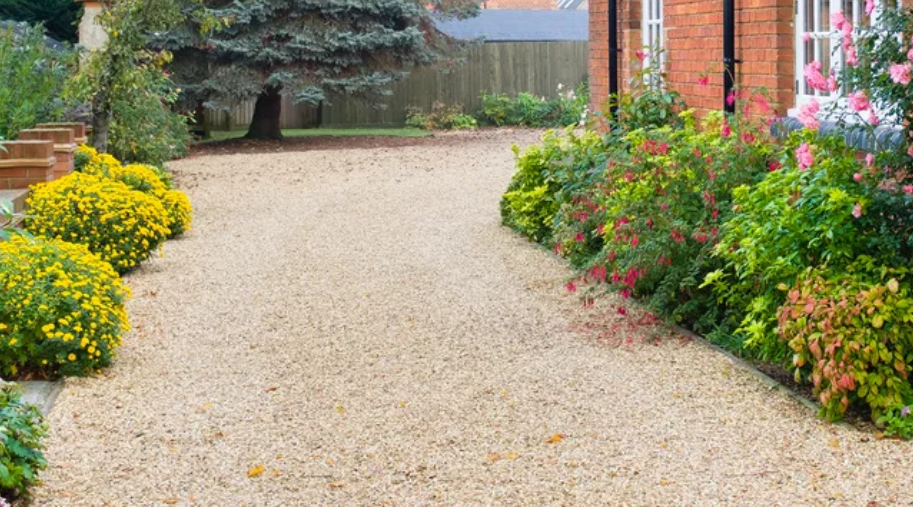Pea gravel is a versatile and affordable decorative aggregate that adds texture, color, and drainage to outdoor spaces. Its smooth, rounded stones come in a range of sizes and hues, making it easy to tailor a look to any landscape design. This guide explores why pea gravel is a smart choice, how to install it properly, maintenance tips, and creative ideas for using it around your home.
What makes pea gravel appealing
Pea gravel is typically small, rounded stones that are comfortable underfoot and easy to walk on. Its natural variation in color—ranging from soft tans and grays to warmer reds and browns—creates a casual, inviting aesthetic. Drainage is a standout benefit; because the stones are rounded and gap through, water flows between them, reducing puddling and soil erosion in many setups. Pea gravel is also relatively low maintenance compared to mulch, as it doesn’t need frequent replacement and resists insect intrusion as much as decomposing organic matter can.
Choosing the right pea gravel
When selecting pea gravel, consider size, color, and intended use. Sizes typically range from ⅜ inch to ¾ inch. For pathways, the smaller end of the spectrum provides a comfortable walking surface, while larger sizes can be used for decorative groundcovers or driveways with proper base preparation. Color coordination matters: lighter shades brighten shaded areas and reflect sunlight, helping to keep surfaces cooler in hot climates. For high-traffic zones, opting for a denser mix or adding stabilizing edging helps prevent displacement and keeps the surface even.
Base preparation and installation
A solid base is crucial for long-lasting pea gravel installations. Start with a permeable sub-base such as compacted crushed stone or road base to promote drainage. A weed barrier or landscape fabric should be laid down to minimize weed growth, though note that some weed seeds can still emerge; regular maintenance may be required. Install edging—such as steel, plastic, or natural timber—to keep the gravel contained and maintain a clean boundary between different areas.
Spread the gravel evenly to the desired depth. For pathways, a depth of 2 to 3 inches is common, while driveways may require 4 to 6 inches with a heavier-duty base and edging. A compacting plate or hand tamper helps settle the gravel in place, followed by a light top-up to restore an even surface after compaction. Regularly check for settled areas and add more gravel as needed.
Maintenance and longevity
Pea gravel is relatively low maintenance but isn’t maintenance-free. Rake the surface periodically to smooth ruts and redistribute stones after heavy use or weather events. Pulling weeds that appear in the fabric or between stones will help keep the surface tidy. In areas with heavy rainfall, ensure drainage remains unobstructed and consider periodic regrading if pooling occurs. Over time, you may accumulate fine dirt and organic debris; a simple rinse with a hose helps wash away grime and brighten colors.
Using pea gravel in different applications
-
Pathways and walkways: Create a natural, foot-friendly surface that blends with garden spaces. Edging keeps the surface neat, and a compacted base prevents shifting in high-traffic areas.
-
Driveways: With a sturdy base, pea gravel can serve as an economical driveway surface. Use larger sizes for better stability and consider a binder or resin for added cohesion in very busy areas.
-
Planting beds and borders: A thin layer of pea gravel over soil can suppress weeds, regulate soil temperature, and give plantings a clean, finished look.
-
Water features and outdoor rooms: Gravel can serve as a decorative groundcover around ponds or as mulch alternatives near patios and seating areas.
Eco-friendly and safety considerations
Pea gravel is inert and generally recyclable, which can align with eco-conscious landscaping goals. For safety, consider accessibility: petits stones can be slippery when wet, and loose gravel can be challenging for wheelchairs. If accessibility is a priority, pair pea gravel with a stable edging system and consider a narrower path with a smooth surface.
Creative design ideas
-
Color-blocked pathways: Use two complementary colors of pea gravel to create distinct lanes or accents within a garden.
-
Zen-inspired spaces: Combine light-colored pea gravel with carefully placed stepping stones and a water feature for a minimalist retreat.
-
Rustic courtyards: Mix warm-toned pea gravel with flagstones and terra-cotta planters to capture a countryside aesthetic.
-
Cushioned seating areas: Create a soft, inviting seating zone by topping gravel with outdoor rugs and outdoor-friendly cushions.
Costs and sourcing
Pea gravel is generally affordable, with price influenced by size, color, supplier, and regional availability. Local landscape suppliers and home improvement outlets typically stock a range of options. The total project cost will include base materials, edging, delivery, and any soil preparation or weed barrier needed. Getting multiple quotes and requesting sample colors can help ensure you’re happy with the final look and budget.
Tips for selecting a supplier
-
Look for grading and wash quality to ensure clean, uniform stones.
-
Ask about delivery options and any minimum load requirements.
-
Inquire about dust suppression methods during delivery or installation.
-
Check if the supplier offers edging or stabilization products that fit pea gravel installations.
Frequently Asked Questions (FAQs)
-
What is pea gravel best used for in landscaping?
Great for walkways, borders, patios, and around planting beds thanks to its smooth feel and good drainage.
-
How deep should pea gravel be installed for a walkway?
About 2–3 inches of loose gravel on a prepared base, with edging to keep it in place.
-
Is pea gravel easy to maintain?
Yes—regularly rake to even out the surface, top up as stones settle, and rinse occasionally to refresh color.
-
Can pea gravel be used as a driveway surface?
Yes, with a sturdy base and edging; for heavy use, consider a binder or resin to hold stones.
-
Will pea gravel attract pests or cause drainage problems?
It drains well between stones and isn’t a food source for pests; use a weed barrier and keep debris cleared to minimize issues.
-
How do you prevent pea gravel from spreading into garden beds?
Install a solid edging along the border and use a weed barrier underneath to limit migration.
-
What kind of edging works best with pea gravel?
Durable options like steel, aluminum, or concrete curbing; choose based on look and maintenance preferences.
-
Can pea gravel be used around trees and shrubs?
Yes; keep gravel away from trunks and use a reduced depth near root zones to avoid moisture competition.
-
How do you clean and refresh pea gravel?
Rake to redistribute, remove debris, and add fresh gravel as needed; a light rinse helps brighten color.
-
What are alternatives to pea gravel for similar looks?
Crushed granite, river rock, decorative gravel blends, or permeable pavers—each with different textures and drainage.

